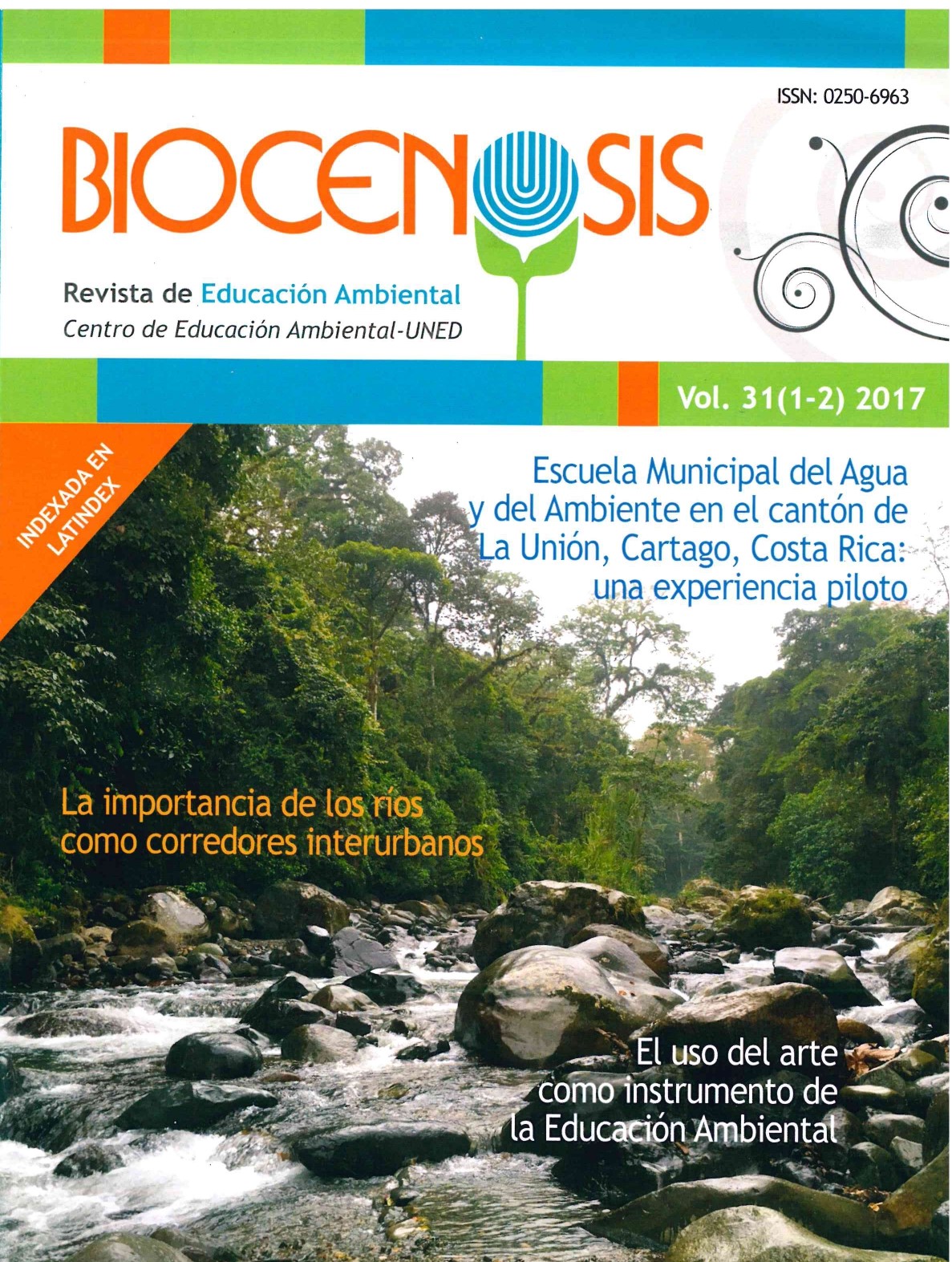¿Cómo usar la fascinación por los dinosaurios para enseñar el Método Científico, Conservación y Ética?
Keywords:
Enseñanza del Método Científico, Extinción de especies, Ética en Ciencia.Abstract
Los dinosaurios tienen un gran potencial educativo porque fascinan por igual a las mentes jóvenes y al público general. Los antiguos chinos, griegos y romanos explicaron sus fósiles con hermosas leyendas; en el siglo XX Parque Jurásico y Caminando con Dinosaurios llevaron el tema de la ciencia de los dinosaurios a las grandes masas. Aquí se explica cómo hacer tres actividades económicas y sencillas: la primera es reconstruir la apariencia de un dinosaurio y su hábitat a partir de fósiles, enseñando los requisitos del Método Científico; puede realizarse con una computadora o manualmente. La segunda es una simple práctica de dibujo que nos enseña la imposibilidad de copiar fielmente una especie extinta ahora que se habla de la “des-extinción”. Y la tercera consiste en una teatralización sobre ética en conflictos relacionados con fósiles. El artículo incluye materiales recortables para hacer las prácticas, así como el detalle de los pasos a seguir, cómo evaluarlas y consejos prácticos.References
Balanoff, A. M., Bever, G. S., & Norell, M. A. (2014). Reconsidering the Avian Nature of the Oviraptorosaur Brain (Dinosauria: Theropoda). PLoS ONE, 9(12): 1-15.
BBC. (2013). US returns stolen Tyrannosaurus dinosaur to Mongolia. Recuperado de: http://www.bbc.com/news/world-asia-22431009
Bierema, A. M. -K., & Rudge, D. W. (2014). Using David Lack’s Observations of Finch Beak Size to Teach Natural Selection & the Nature of Science. The American Biology Teacher, 76(5): 312-317.
Carter, B. E., Infanti, L. M., & Wiles, J. R. (2015). Boosting Student’s Attitudes & Knowledge about Evolution Sets Them Up for College Success. The American Biology Teacher, 77(2): 113-116.
Chudyk, S., McMillan, A. & Lange, C. (2014). Using the Eastern Hellbender Salamander in a High School Genetics and Ecological Activity (Enlace). The American Biology Teacher, 76(5): 338-344.
Coles, I. y Saif, H. (2015). With sledgehammer, Islamic State smashes Iraqi history. Reuters. Recuperado de: reuters.com/article/2015/02/26/us-mideast-crisis-iraq-museum-idUSKBN0LU-1CW20150226
Dzemski, G. & Christian, A. (2007). Flexibility along the neck of the ostrich (Struthio camelus) and consequences for the reconstruction of dinosaurs with extreme neck length. Journal of Morphology, 268 (8): 701-14.
Eliyahu, D. (2014). ‘Chromoseratops meiosus’: a simple, two-phase exercise to represent the connection between meiosis and increased genetic diversity. The American Biology Teacher, 76(1): 53-56.
Farke, A. (2013). Developing an Ethic for Digital Fossils. Digitation. Recuperado de: http://blogs.plos.org/paleo/2013/12/05/developing-an-ethic-for-digital-fossils/
Feo, T. J., Field, D. J., & Prum, R. O. (2015). Barb geometry of asymmetrical feathers reveals a transitional morphology in the evolution of avian flight. Proceedings of the Royal Society B, 282: 1-9.
Fowler, D. W., Freedman, E. A., Scannella, J. B., & Kambic, R. E. (2011). The Predatory Ecology of Deinonychus and the Origin of Flapping in Birds. PLoS ONE, 6(12): 1-13.
Harris, M. P., Hasso, S. M., Ferguson M. W., & Fallon, J. F. (2006). The development of archosaurian first-generation teeth in a chicken mutant. Current Biology, 16(4): 371-7.
Huang, T., Zhang, M., Wei, Z., Wang, P., Sun, Y., Hu, X… & Zhao, Y. (2012). Analysis of immunoglobulin transcripts in the ostrich Struthio camelus, a primitive avian species. PLoS One, 7(3): e34346.
Jerzykiewicz, T., & Russell, D. A. (1991). Late Mesozoic stratigraphy and vertebrates of the Gobi Basin. Cretaceous Research, 12(4): 345–377.
Krupa, J. J. (2014). Scientific Method & Evolutionary Theory Elucidated by the Ivory-billed Woodpecker Story. The American Biology Teacher, 76(3):160-170.
May, S. R. (2014). The Coevolution of Tyrannosaurus & Its Prey: Could Tyrannosaurus Chase Down & Kill a Triceratops for Lunch? American Biology Teacher 76(2): 118-123.
Mayor, A. (2000). The ‘Monster of Troy’ Vase: The Earliest Artistic Record of a Vertebrate Fossil Discovery? Oxford Journal of Archaeology, 19(1): 57–63.
Mayr, G., Alvarenga, H. & Mourer-Chauviré, C. (2011). Out of Africa: Fossils shed light on the origin of the hoatzin, an iconic Neotropic bird. Naturwissenschaften, 98(11): 961–6.
Monge-Nájera, J. (2016a). Ann’s secret relationship with King Kong: a biological look at Skull Island and the true nature of the Beauty and Beast Myth. CoRis: Revista de Ciencias Sociales y Humanidades, 12, 13-28.
Monge-Nájera, J. (2016b).Resurrección de especies extintas: el por qué sí y el por qué no de la des-extinción en lenguaje sencillo. Biocenosis, 30(1-2): 80-86.
Norell, M., & Makovicky, P. J. (1999). Important features of the dromaeosaurid skeleton. 2, Information from newly collected specimens of Velociraptor mongoliensis. American Museum novitiates, 3282: 1-45.
Saunders, C., & Taylor, A. (2014). Close the Textbook & Open “The Cell: An Image Library”. American Biology Teacher, 76(3): 201-207.
Schauer, A., Cotner, S., & Moore, R. (2014). Teaching evolution to students with compromised backgrounds & lack of confidence about evolution – is it possible? The American Biology Teacher, 76(2): 93-98.
Turner, A. H., Makovicky, P. J. & Norell, M. A. (2007). Feather quill knobs in the dinosaur Velociraptor. Science, 317(5845): 1721.
Watkins, R. S., Hoyle, F., Wickramasinghe, N. C., Watkins, J., Rabilizirov, R., & Spetner, L. M. (1985). Archaeopteryx: A Photographic Study. British Journal of Photography, 132: 264-266.
Yerky, M. D., & Wilczynski, C. J. (2014). The Mystery of the Skulls: What Can Old Bones Tell Us about Hominin Evolution? The American Biology Teacher, 76(2): 109-117.
